Which material conducts heat better, wood, plastic, or metal? In this experiment, we learn about conducting heat and how various materials conduct heat differently.
Note: Although the materials for this experiment are easy to find, one of the materials is boiling hot water. Depending on the age of your children the help of an adult is important. See our demonstration video and printable instructions below.
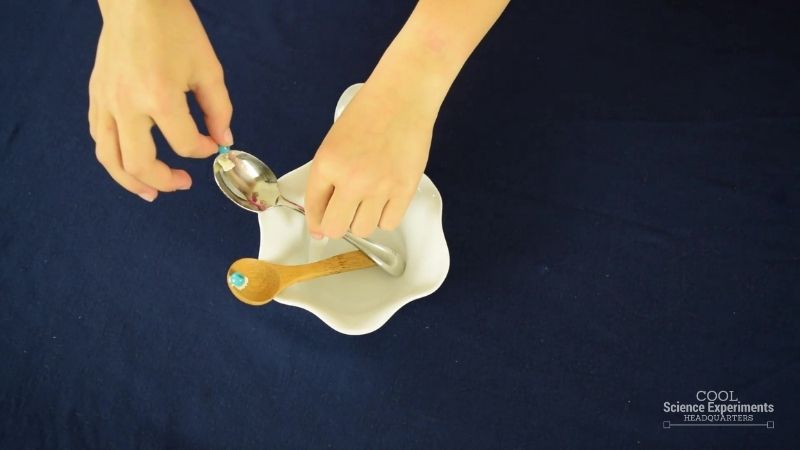
JUMP TO SECTION: Instructions | Video Tutorial | How it Works
Supplies Needed
- Small Glass Bowl
- Three Spoons (1 made out of wood, 1 made out of plastic and 1 made out of metal)
- Butter
- 3 Beads
- Boiling Water
Conducting Heat Lab Kit – Only $5
Use our easy Conducting Heat Science Lab Kit to grab your students’ attention without the stress of planning!
It’s everything you need to make science easy for teachers and fun for students — using inexpensive materials you probably already have in your storage closet!
Conducting Heat Science Experiment Instructions
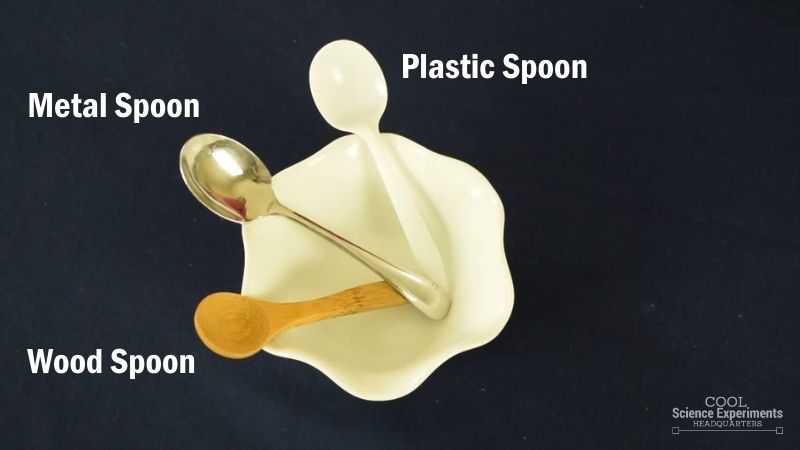
Step 1 – Begin by positioning 3 spoons in a small glass bowl.
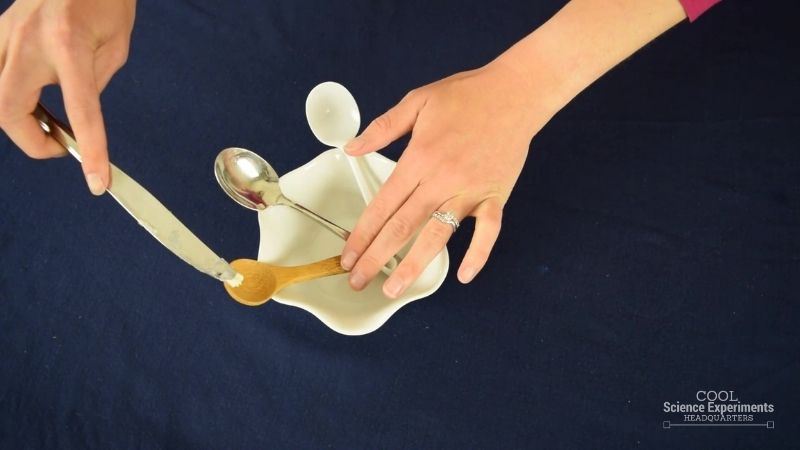
Step 2 – Place a small pat of butter at the top of each spoon.

Step 3 – Put a bead in each pat of butter.

Step 4 – Carefully pour hot boiling water into the bowl until it is almost completely full. Be careful not to allow the spoons to fall into the bowl.
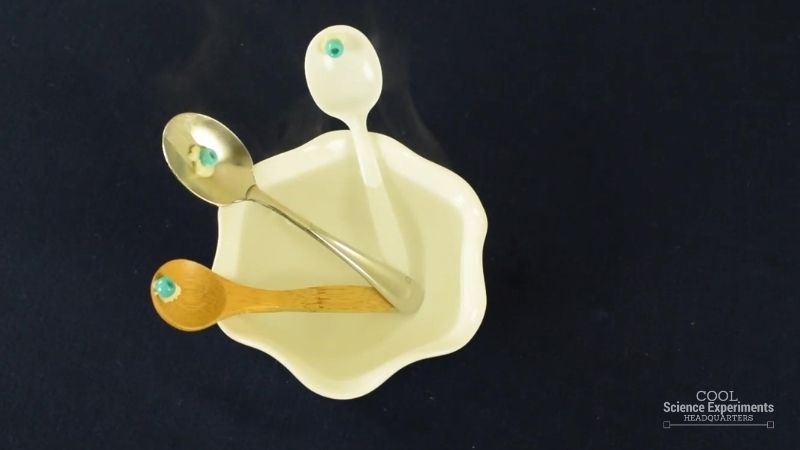
Step 5 – Watch carefully to see what happens to the beads. Write down your observations. Did all the beads behave the same? Do you know why? Find out the answer in the how does this experiment work section below.
Helpful Tip: You will likely need to watch the experiment for 5-10 minutes before anything happens.
Video Tutorial
Conducting Heat Science Experiment Step by Step Instructional Video
How Does the Science Experiment Work
Heat can move in three ways: conduction, convection and radiation. In this experiment, the heat was transferred by means of conduction.
Conduction is the transfer of heat from one particle of matter to another without the movement of matter itself. As matter is heated, the particles that make up the matter begin to move faster.
In this experiment when we placed the spoons in the boiling water, the fast-moving water particles collide with the slow-moving spoon particles. As a result of the collision between the water particles and spoon particles, the particles of the spoon begin to move faster and the metal spoon becomes hotter. As the metal spoon gets hotter, the butter begins to melt and the bead slides down the spoon.
Why did the bead slide down the metal spoon faster than the wooden spoon or plastic spoon? Metal is a good conductor of heat, while wood and plastic are good insulators. A conductor transfers thermal energy (heat) well, while an insulator does not transfer thermal energy (heat) well.
Conducting Heat Lab Kit – Only $5
Use our easy Conducting Heat Science Lab Kit to grab your students’ attention without the stress of planning!
It’s everything you need to make science easy for teachers and fun for students — using inexpensive materials you probably already have in your storage closet!
I hope you enjoyed the experiment. Here are some printable instructions:
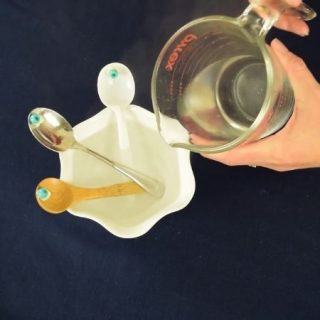
Conducting Heat Science Experiment
Materials
- Small Glass Bowl
- Three Spoons (1 made out of wood, 1 made out of plastic and 1 made out of metal)
- Butter
- 3 Beads
- Boiling Water
Instructions
- Begin my positioning 3 spoons in a small glass bowl.
- Place a small pat of butter at the top of each spoon
- Put a bead in each pat of butter
- Carefully pour hot boiling water into the bowl until it is almost completely full. Be careful not to allow the spoons to fall into the bowl.
- Watch carefully to see what happens to the beads. Note: You will likely need to watch the experiment for 5-10 minutes before anything happens.

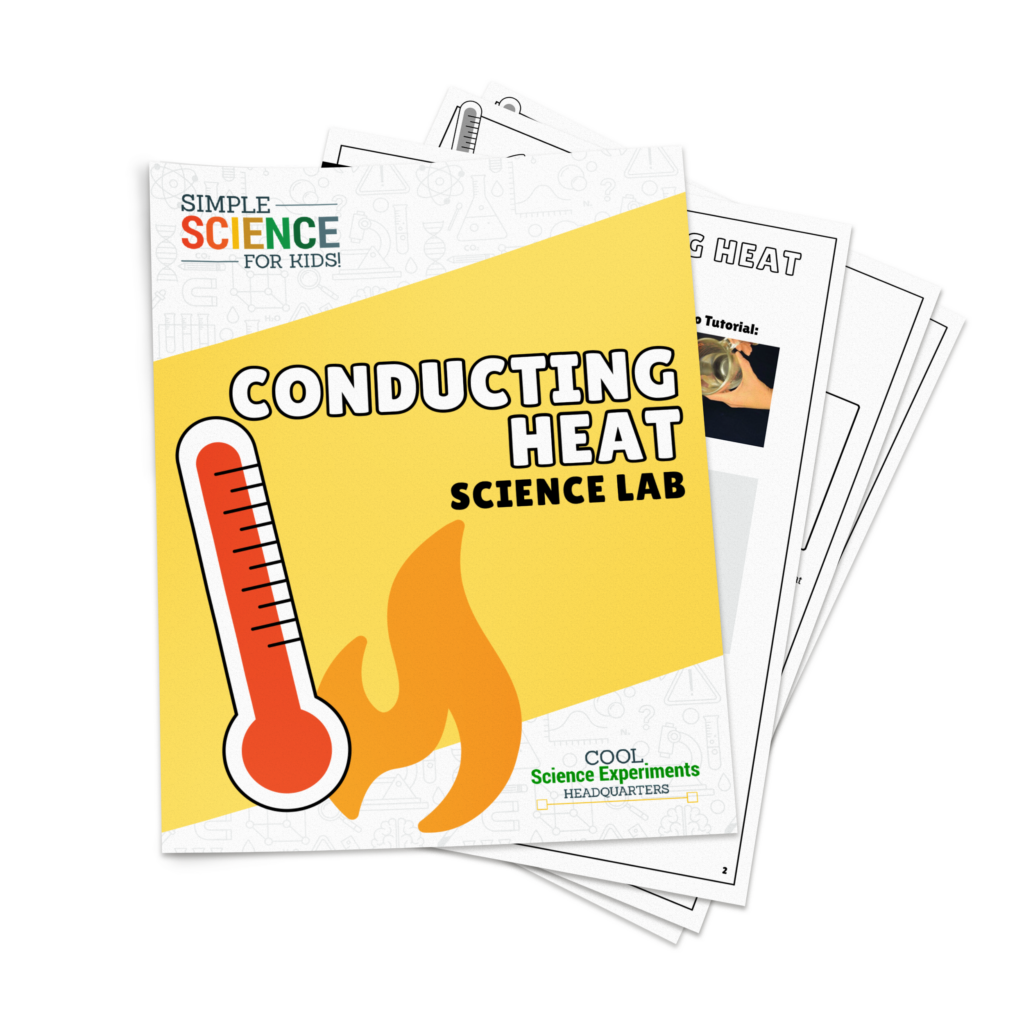

Dear CoolScienceExperimentsHQ,
Thank you so much for sharing this, this really-really helped me and my group out on our science experiment on conduction and convection! Again i have to say thank you for this.
~a grateful 7th grader
yes i agree with you this was very helpful and it looks fun to make.
same with me lol but for yr 8
I have not tried this experiment yet but, based on the comments so far I can be almost sure that it will work thanks for being super awesome scientists -A 5th grader that hopes to be grateful in the future